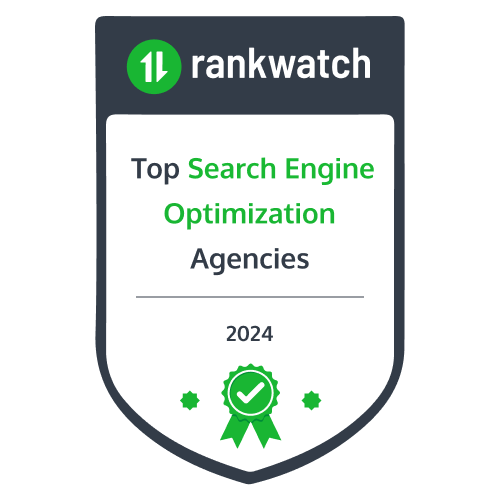
You’re likely facing common SEO challenges, but don’t worry—there are ways to tackle them. Google SEO and Algorithm updates can be tricky, and creating high-quality content is essential. Don’t forget to optimize for mobile and improve page load speed. Building a strong backlink profile is key, as well as managing duplicate content. Stay updated with structured data markup and monitor your SEO performance. Curious about how to stay ahead of competitors?
Understanding Algorithm Updates
Algorithm updates can seem intimidating, but they’re essential for SEO success. You need to understand these changes to stay ahead.
Start with algorithm impact analysis. This helps you see how updates affect your site. Look at your traffic and ranking shifts.
Then, focus on update frequency tracking. Keep an eye on how often these updates happen. It helps you prepare and adjust your strategy quickly.
Next, explore ranking factors evaluation. Know what search engines prioritize now. This includes things like site speed and mobile-friendliness.
Creating High-Quality Content
With a clear grasp of algorithm updates, it’s time to focus on creating high-quality content. Start by using effective content creation strategies.
Plan your topics carefully and guarantee they align with your audience’s interests. Use audience engagement techniques to keep readers hooked. Ask questions, invite comments, and encourage sharing. This interaction boosts visibility and builds loyalty.
Incorporate storytelling methods in your writing. Stories make content relatable and memorable.
Share experiences or case studies that connect emotionally with your audience. A strong narrative can make complex ideas simple and engaging.
Optimizing for Mobile Search
Ever wondered how often people use their phones for search? It’s a lot! That’s why optimizing for mobile search is essential.
First, make certain your site has a mobile friendly design. This means your site looks and works well on smartphones.
Next, implement responsive layouts. These layouts automatically adjust your site’s appearance based on the device being used. This guarantees users have a good experience no matter their screen size.
Also, consider touch navigation. Make sure buttons and links are easy to tap with fingers. This improves usability and keeps visitors on your site longer.
Improving Page Load Speed
Now that your site is mobile-friendly, let’s talk about speeding it up. Fast page load speed is essential for a good user experience.
Start with caching techniques. They store a version of your site, so visitors get content faster.
Next, focus on image optimization. Large images slow down pages. Use tools to compress them without losing quality. This improves load time considerably.
Don’t forget about server response. A slow server can ruin your efforts. Choose a reliable hosting provider and keep your server software updated.
Regularly monitor your site’s speed with online tools. They help identify potential issues.
Building a Strong Backlink Profile
Although often overlooked, a strong backlink profile is essential for improving your site’s authority and search engine ranking. You need quality links pointing to your site.
Start with backlink outreach strategies. Reach out to relevant sites in your niche. Build relationships. Offer value, not just requests.
Explore guest blogging opportunities. Write valuable content for other sites. In return, get a link back to your site. This boosts your credibility.
Consider authority site collaborations. Partner with well-known sites in your industry. Co-create content or run joint projects. These links from respected sites enhance your profile.
Consistency is key. Regularly update your strategies. Monitor your backlinks. Verify they’re from reputable sources.
A strong backlink profile takes time but pays off.
Conducting Effective Keyword Research
Keyword research is the backbone of a successful SEO strategy. Start by identifying long tail keywords. These are phrases that are specific and less competitive. They help you attract targeted traffic.
Understand the keyword intent. Are users looking to buy, learn, or just browse? This helps you tailor content to meet their needs.
Next, perform a competitor analysis. Check which keywords your competitors rank for. This gives you insight into what’s working for them. You can find gaps in their strategy and capitalize on those.
Use tools like Google Keyword Planner or SEMrush. These tools suggest relevant keywords and show search volume.
Don’t rely on one keyword. Diversify and use variations. Effective keyword research boosts your visibility and drives more visitors to your site.
Enhancing User Experience
To enhance user experience, focus on creating a website that’s both intuitive and engaging. Start with intuitive navigation design. Make sure users can find what they need quickly. Menus should be simple and logical. Avoid clutter. Clear paths guide users effortlessly through your site.
Next, use personalized content delivery. Tailor content to individual users. Show them what matters most based on their preferences and behavior. This keeps them interested and coming back for more.
Don’t forget about user feedback mechanisms. Encourage visitors to share their thoughts. Use surveys or comment sections. Listen to their feedback and make improvements.
It’s a direct way to know what works and what doesn’t. By refining these areas, you’ll create a better user experience and boost your site’s success.
Implementing Local SEO Strategies
Image source: Freepik
Enhancing user experience naturally leads to a focus on implementing local SEO strategies. You need to guarantee your business stands out locally.
Start by claiming and optimizing your Google My Business profile. This helps potential customers find you easily. Include accurate information and engaging photos.
Next, focus on local citations. Make certain your business name, address, and phone number are consistent across all platforms. This boosts your visibility and credibility.
Encourage customer reviews. Positive feedback improves your reputation and attracts more visitors. Responding to reviews shows you care about customer satisfaction.
These steps can considerably enhance your local presence. Engaging with your community and maintaining your online listings are keys to success.
Stay active and responsive to keep your local SEO effective.
Managing Duplicate Content Issues
Duplicate content can be a major hurdle in SEO, affecting your ranking and visibility. It’s essential to tackle this issue head-on.
Start by understanding why duplicate content happens. Often, it’s due to content syndication strategies or accidental repetition. You need to implement effective duplicate content prevention techniques.
One way is through canonical tag implementation. A canonical tag tells search engines which version of a page should be considered the original. This helps direct the search engine’s focus on the right page, boosting your SEO.
Regularly audit your site for duplicate content. Use tools to identify and fix issues promptly. Stay proactive, and you’ll see improvements in your site’s performance.
Utilizing Structured Data Markup
When you want to improve your site’s SEO, structured data markup can be a game changer. It helps search engines understand your content better. This leads to higher visibility in search results.
The structured data benefits include enhanced snippets and increased click-through rates.
There are several schema markup types like articles, products, and events. Each type can be tailored to your site’s content. You should choose the right type that fits your needs.
For implementation strategies, start by identifying which pages need markup. Use Google’s Structured Data Markup Helper as a guide. It’s a simple tool to create and test your markup.
Confirm your markup is correct by using the Rich Results Test. With these steps, you’re on your way to better SEO.
Monitoring and Analyzing SEO Performance
After implementing structured data markup, it’s important to keep an eye on how your SEO efforts are performing. Start by doing a performance metrics analysis. This helps you see what’s working and what needs tweaking.
Look into traffic source evaluation. Identify where your visitors are coming from. Are they finding you through search engines, social media, or direct visits? This knowledge helps you focus your efforts.
Next, keep an eye on conversion rate tracking. Are visitors taking the actions you want, like signing up for newsletters or buying products? If not, you might need to adjust your strategy.
Regular monitoring keeps you aware of your SEO’s health. Use tools to help you gather data and make informed decisions. Stay proactive to achieve better results.
Staying Ahead of Competitors
How do you stay ahead of competitors in the ever-evolving world of SEO?
First, use competitive analysis techniques. Investigate your competitors’ strategies. What keywords do they target? What content do they produce? Knowing this helps you create better plans.
Next, focus on market positioning strategies. Position your brand uniquely in the market. Highlight what makes you different. This involves crafting unique value propositions. Ask yourself, “Why should customers choose us over others?” Your answer should be clear and persuasive.
Finally, stay updated with SEO trends. The digital landscape changes fast. Be ready to adapt. Improving your website’s performance and content regularly keeps you ahead.
Conclusion
To overcome common SEO challenges, you need to stay proactive and adaptable. Keep an eye on algorithm updates and always aim to create content that speaks to your audience. Don’t forget to optimize for mobile and speed up your pages for a better user experience. Strengthen your backlink profile and resolve any duplicate content issues. Use structured data to help search engines understand your site. Regularly monitor your performance to stay ahead of the competition.




